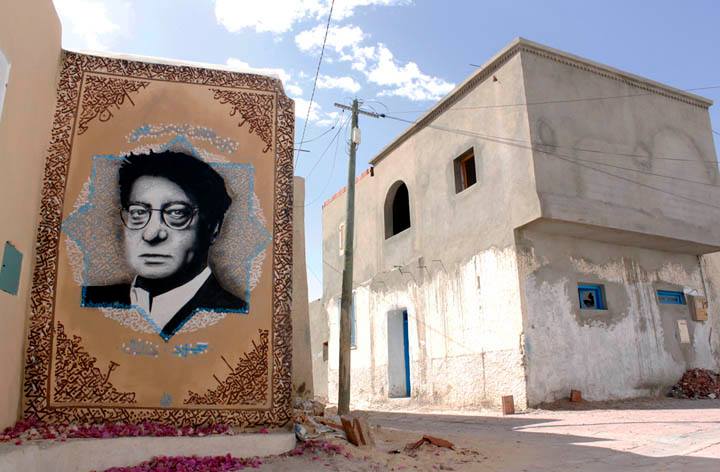
By Yara Boraie
Power to the people longing to be heard by society – and what more powerful way to voice the unheard than through the urban walls that people pass by every day.
The graffiti scene has long been scorned at by claims of being rebellious, chaotic and drawing disorder within a nation, rather than being a form of art and, in some cases, the only medium for self-expression. Although street art is against the law in many countries, it is a powerful medium that does not undergo government censorship like other art forms including art, literature and films.
Street art is all about “strengthening the people, being with the people, listening to the people,” said Mia Grondahl, founder of Women on Walls – a public art initiative in Egypt that aims to empower women through bold feminist street art.
Defying the illegality of street art and graffiti in the Middle East, each of these artists has developed their own distinctive street aesthetic with a powerful message to be disseminated. With the recent rapid development of the street art scene, they have voiced their opinions, challenged the norm, made their mark– and they are heard.
1. Laila Ajjawi, Jordan
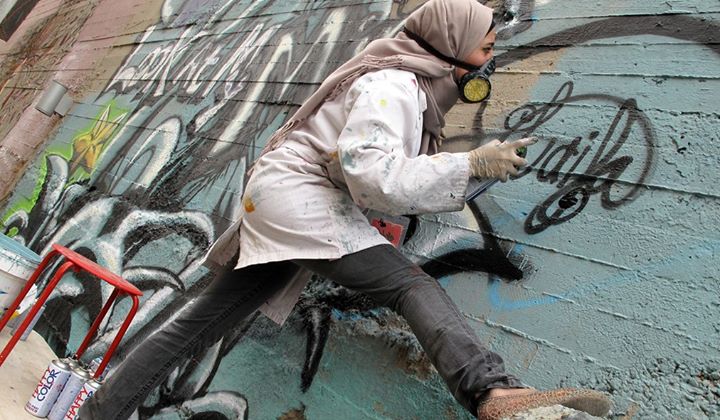
Having grown up in a Palestinian refugee camp in northern Jordan, Laila Ajjawi relates to the exiled women of today’s refugee camps and has helped them overcome their fears and situations by exploring their creativity.
A Palestinian painter with a Jordanian passport, Ajjawi created her first graffiti piece tackling gender inequality which was featured in an all-female project called ‘Women On Walls’ on the longest graffiti-adorned wall the Middle East has ever seen along with work by other female artists.
“There are so many issues facing women in the Middle East; women’s rights – how we are treated, for example. My mural is about what’s in my mind. What people can’t – or won’t see,” Ajjawi said. “It’s about expression, and I try to use my art to tell a story and help others express themselves. I want to do more and art can be a conduit for change.”
2. Keizer, Egypt
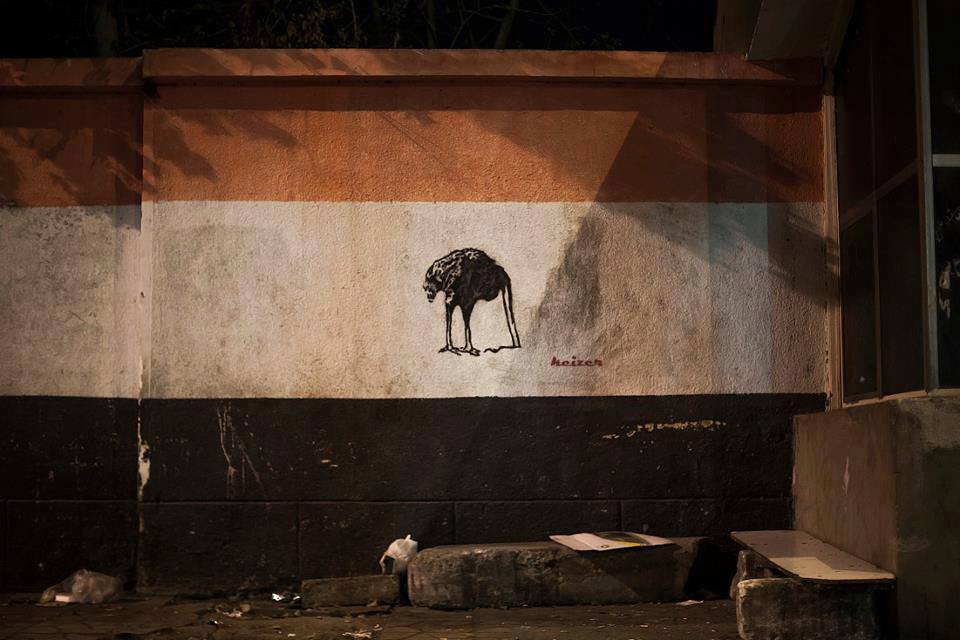
Keeping his identity a secret, this Cairo-based street artist prefers to let his artwork speak for itself, leaving behind his signature Keizer Ant – either a single one or a swarm – sprayed onto the walls of the Cairo’s ancient, post-revolution streets.
Keizer likens the struggling Egyptian people to ants that Keizer says symbolizes, “the forgotten ones, the silenced, the faceless, those marginalized, degraded, victimized by capitalism, the unacknowledged and the nameless that have died over the centuries in wars, genocides and ethnic cleansing.”
Although he has taken his murals to art exhibitions in London, Germany, Holland and Italy, Egypt’s most famous graffiti artist still, Keizer still insists on remaining anonymous, proudly representing his homeland and making sure his message is heard around the world.
3. ‘Laila’, Palestine
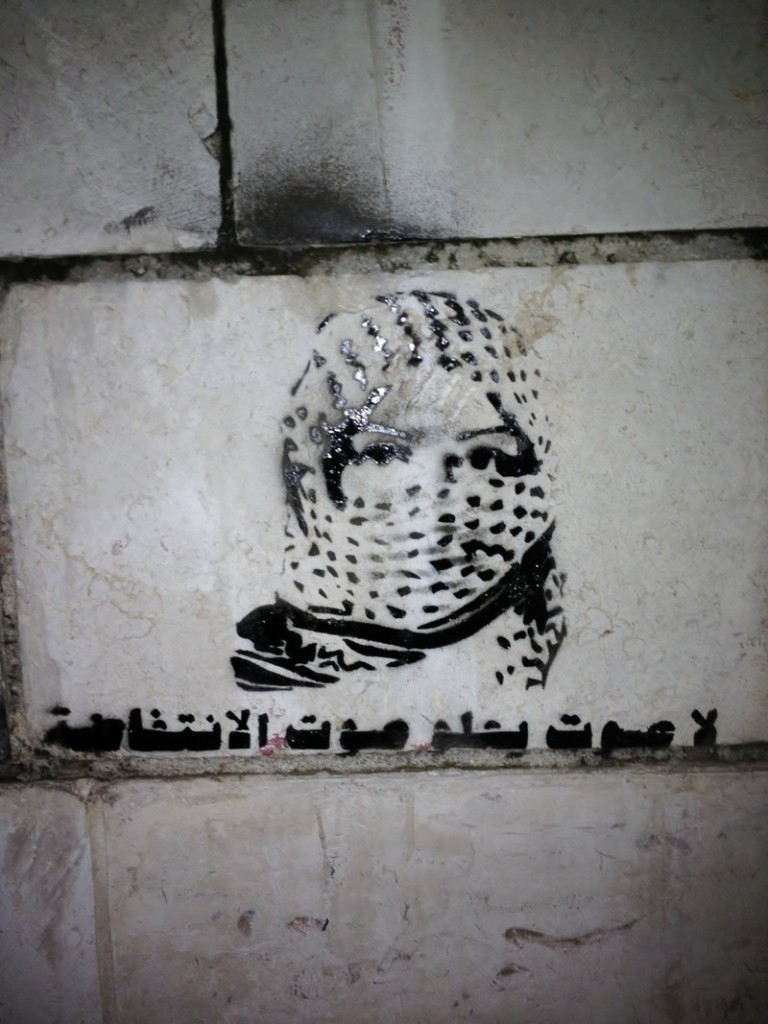
Operating under the self-chosen pseudonym, this anonymous Jerusalem-based artivist identifies her work as a tool to encourage Palestinians to peacefully speak up against the occupation.
The feminist activist is also the spokesperson and member of an unnamed Palestinian group widely recognized for stenciling the walls of Jerusalem with iconographic faces of women veiled with Palestine’s national symbol – the kufiyyeh – “carrying on the legacy of art as a form of resistance” and serving as a reminder of the peaceful side of the ongoing resistance that is often portrayed as violent by the mainstream media.
“I am not under the illusion that our street art or the unarmed demonstrations are going to end the occupation tomorrow morning, but they build a system of resistance,” said ‘Laila’ in an interview with The Electronic Intifada. “We want to remind them that these were Palestinian neighborhoods, this is Palestine and we are still here.”
4. Yazan Halwani, Lebanon
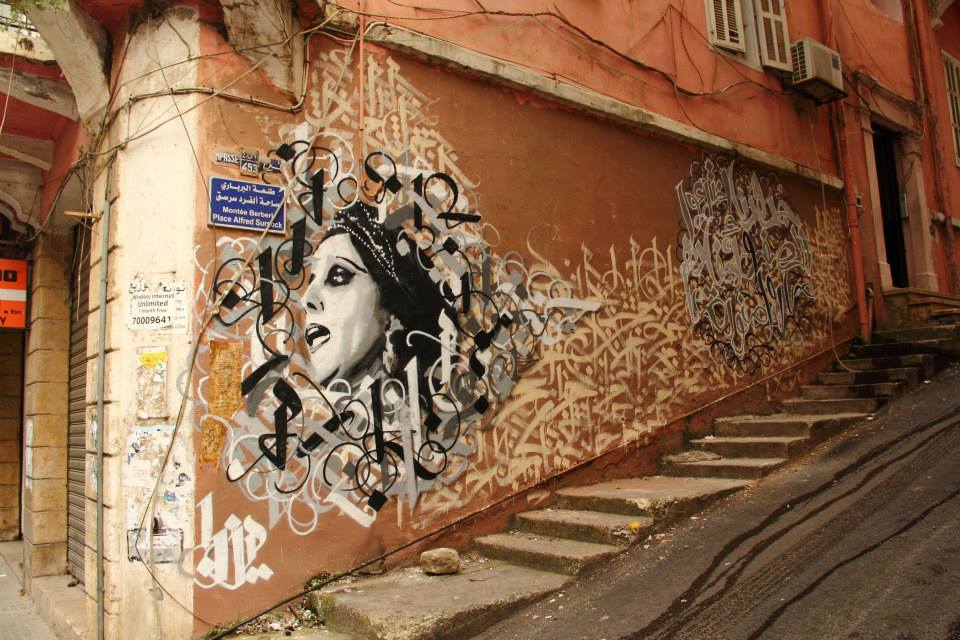
Based in Beirut, Yazan Halwani’s work is reminiscent of the Middle East’s artistic history. Inspired by the West’s pulsating street art scene, Halwani says he felt compelled to revive the region’s beloved culture through his murals and toss some much-needed color, creativity and stories onto the city’s once-dull walls.
Halwani’s intricate motifs merge portraits of Middle Eastern key figures and their poetic work with traditional Middle Eastern calligraphy to produce “calligraffiti” – a term coined by Tunisia’s El Seed and Iran’s A1one. Enlivening the city’s walls, his work demonstrates his attentiveness to detail and deep ties to the local culture resulting in vibrant mural masterpieces.
However, not all of Halwani’s lively murals are depictions of renowned people. He also tackles the issue of homelessness in his mural of a homeless man who died from the cold during Lebanon’s Civil War. “Some people told me that I paint ‘famous people’, this is not true. I paint faces that tell stories, and are part of our culture,” Halwani affirms. “A good mural is one that talks to the citizens surrounding it: it becomes part of the city and it becomes theirs, not the artist’s.”
5. Ghalamdar, Iran

Ghalamdar, which is Farsi for ‘the writer’, is an up-and-coming street artist, who has made Tehran’s abandoned buildings his own canvas for self-expression and eventually, bring them to life. Painting behind the infamous face of post-modern protests – the Guy Fawkes mask from the critically acclaimed comic V for Vendetta – Ghalamdar started his career at just 15.
Drawing inspiration from traditional Iranian art forms such as calligraphy and miniature paintings, Ghalamdar teamed up with the Elf Crew, one of the first graffiti groups in Iran, between 2011 and 2014, developing a distinctive style that has set him apart as a street artist. Now exhibiting his work in the UK and the US, Ghalamdar’s works showcase a longing for Iranian identity and culture.
“I believe that being creative doesn’t mean denying your traditions. Traditions are what give us identity, what make me different from you. But, “reviving” things is useless,” said Ghalamdar. “What I believe is that we can take our traditions, religion and all that kind of stuff, and put it together into a new, modern, creative and better culture.”
He also believes that the ‘gallerization’ of street art does not change its core message or disrupt the art form but expands it.
“In terms of presenting our works in a gallery, I really don’t see a problem with it. Right now the debate concerns whether our work has to be located on the street for it to be considered graffiti,” said Ghalamdar. “In my opinion, street art is a package that encompasses a variety of practices like design, decor, and fashion– it’s something that doesn’t have limitations any more. The nature of graffiti is changing, but the core of it all– writing on the walls– shouldn’t be lost either.”
6. Sarah Al Abdali, Saudi Arabia
Hailing from a family with a rich Hijazi history, this Saudi graphic designer has always been inspired by the heritage of the coastal region of Saudi Arabia, to the point where she finds herself in a constant state of alienation from her continuously transforming homeland.
“I was eager to express my thoughts on and critiques of the politics of development, architectural landscapes, modern aesthetics, historical amnesia, and socio-political inequalities, among others. This sense of loss, coupled with a desire for a different future, compelled me to share these ideas with the wider public on the walls of my city, Jeddah. I was therefore inspired by critique first and foremost, and the artform consequently followed. Informed and inspired by the Hijazi culture and aesthetics, I have since experimented with various genres, artistic traditions, and mediums, including oil painting, film, photography, and illustration,” said Al Abdali.
Branded as one of Saudi Arabia’s first female street artists, Al Abdali uses her artwork as an opportunity to illuminate the beauty and culture of Hijazi.
“Saudi is going through a lot of change and street art is the perfect medium to experiment in,” said Al Abdali. “It’s something very new here. I started with very random shapes but I wanted to develop more concepts that people could relate to. I like street art because it’s there for the people. You don’t need to overdo your ideas, it’s a simple way of expressing yourself.”

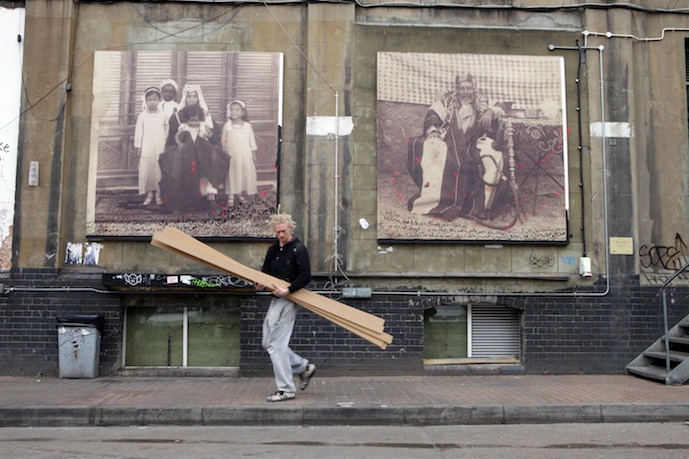


















[…] More… […]